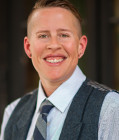Understanding and Handling Hate Crimes against Gay, Bisexual, and Transgender People
Recent research reveals that, over the course of their lifetimes, about one in five lesbian, gay, and bisexual Americans will experience hate violence. More than one in four transgender people face the same risk. Understanding the dynamics of such hate crimes and responses to them is obviously important if America is to successfully prevent and adequately deal with these harms.
The Unique Dynamics of Hate Crimes
Lesbian, gay, bisexual, or transgender people — LGBT for short — make up only 3.5% of the total U.S. population yet are highly overrepresented as victims of hate crimes. Although data collected by the federal government indicate that the incidence of all hate crimes has remained relatively stable over time, the proportion of hate crimes against LGBT individuals has increased in recent years. Despite this increase, available resources are inadequate for victims and the institutions meant to serve their needs are failing to do so.
Anti-LGBT hate crimes are rooted in general biases against lesbian, gay, bisexual, or transgender people and in an offender’s belief (correct or incorrect) that the victim is a member of a disfavored group. All LGBT people are potential targets of hate crimes — of which the most frequent are vandalism, criminal threats, and assaults — yet individual rates of victimization also vary by race, age, gender, or other characteristics. For example, LGBT people of color typically experience more serious hate crimes than white LGBT victims. And even though transgender people experience the same types of crimes as lesbian, gay, and bisexual victims, they report higher rates of injury from these incidents.
Hate crimes differ from similar crimes not motivated by bias in several important ways. Specifically, they more often involve multiple offenders, increasing the severity and likelihood of injury to victims. Accordingly, it is important to consider the specific factors that contribute to anti-LGBT hate crimes, the specific needs of victims of these acts, and how those needs might differ from the needs of other crime victims.
Why Public Policies Matter
Public policy decisions have the potential to influence rates of hate crime victimization, although the relationships are complex. Laws specifically about hate crimes typically provide for enhanced criminal penalties for perpetrators or offer extra avenues of civil recourse to victims. Although such laws can expand legal options for victims, they do not prevent individual hate crimes from occurring or reduce the overall incidence of anti-LGBT hate crimes.
Other policies that promote the recognition of LGBT people as equal citizens — such as legislation recognizing same-sex marriage rights — are associated with reduced rates of anti-LGB hate crimes. And on the other side of the coin, same-sex marriage bans have been associated with higher rates of hate crimes directed against gay and bisexual people. These findings suggest the importance of ensuring that any legislation pertaining to LGBT people not stigmatize or marginalize them, because any such legal discrimination can encourage increased violence against members of the LGBT community.
Victims Fearful of Reporting and Seeking Help
Victims of anti-LGBT hate crimes are severely underserved by both the criminal justice and health care systems — the two sets of institutions most directly involved in helping crime victims. Why is that? In the first place, fewer than half of all anti-LGBT hate crimes are reported to the police, and the most common reason victims give for not reporting cites fear of harassment and further victimization at the hands of police. Likewise, only 14% of all victims seek medical care, despite the fact that hate crimes more often result in injury to victims than other crimes. Again, fear of discrimination from medical providers plays a critical role in the decision not to seek medical care.
How to Prevent Hate Crimes and Better Serve Victims
Specific, targeted interventions are necessary to reduce the number of anti-LGBT hate crimes, because these crimes have not leveled off as other crimes have recently done. Young adults are the ones who most frequently commit these crimes, so anti-bullying programs and other educational programs may help to improve the general social climate for LGBT people and, in the process, reduce the biases that spur anti-LGBT hate crimes.
Timely and accurate data on anti-LGBT hate crimes are also essential to understanding and preventing these crimes. Consequently, the following policies and procedures should be developed to ensure that state and local police departments identify, counter, and accurately report hate crimes:
- Police training should be improved to reduce instances of misclassification of anti-LGBT hate crimes.
- Police departments should develop cultural competency training to enhance the ability of officers to work with LGBT people and communities. This could also help encourage LGBT victims to report crimes, and improve data collection on such infractions as well.
Health care provision to LGBT victims of violence should likewise be improved through increased training for medical care providers. They need to learn to identify hate crimes and improve cultural competency working with LGBT people, including victims as well as all others in the community.
Finally, to improve service provision and deal with crimes against LGBT peoples, ongoing collaborations among police, health care providers, and advocacy and community organizations should be fostered everywhere. Such cooperation can improve the general societal environment and reduce the biases that encourage hate crimes, at the same time as it improves care for victims.
Read more in Liz Coston, “Understanding Characteristics of Victims and Perpetrators of Anti-LGBT Hate Crimes in the United States” Violence and Victims 33, no. 3 (2018).
